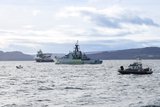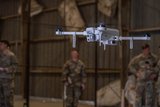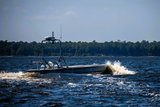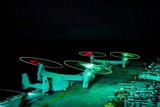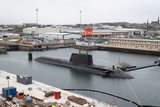US Navy goes shopping for maritime uncrewed capabilities
A US Navy Global Autonomous Reconnaissance Craft. (Photo: US Navy)
The US Navy (USN) is seeking suppliers for maritime uncrewed platforms while preparing to start multiple development and acquisition efforts in FY2026. It has recently published several requests for information (RfIs) and sources sought notices involving aerial, surface and underwater capabilities and operational support solutions.
Only in September, the branch issued solicitations for an ocean explorer (OEX) large underwater vehicle, a submarine rescue mission platform to be used as a mothership, a remote minehunting (RMH) module to be operated from Mine Countermeasures Unmanned Surface Vehicles (MCM USV) and a Tactical Resupply Unmanned Aircraft System (TRUAS).
In the case of
Already have an account? Log in
Want to keep reading this article?
More from Naval Warfare
-
![US and UK to begin Trident II D5 Increment 8 in October 2026]()
US and UK to begin Trident II D5 Increment 8 in October 2026
Trident II D5 Increment 8 will involve improvements to the shipboard navigation subsystem for the US Ohio and Columbia and the UK Dreadnought and Vanguard submarine classes.
-
![US Navy starts acquisition process for uncrewed maritime systems for support missions]()
US Navy starts acquisition process for uncrewed maritime systems for support missions
The USN is interested in uncrewed capabilities that can carry out explosive ordnance disposal, mine countermeasures, force protection, ISR and anti-submarine missions.
-
![What capabilities has the US deployed in the Caribbean and South America to engage “drug boats”?]()
What capabilities has the US deployed in the Caribbean and South America to engage “drug boats”?
The US arsenal includes amphibious assault and littoral combat ships, cutters, destroyers, landing platform docks, a nuclear-powered fast attack submarine, drones, ISR aircraft, helicopters and fighters.
-
![HMS Agamemnon: details of the dive and what the Astute-class signifies for the UK Royal Navy]()
HMS Agamemnon: details of the dive and what the Astute-class signifies for the UK Royal Navy
As HMS Agamemnon moves closer towards joining the UK’s in-service submarine fleet, how does the sixth Astute-class fit into the Royal Navy’s defence strategy?









